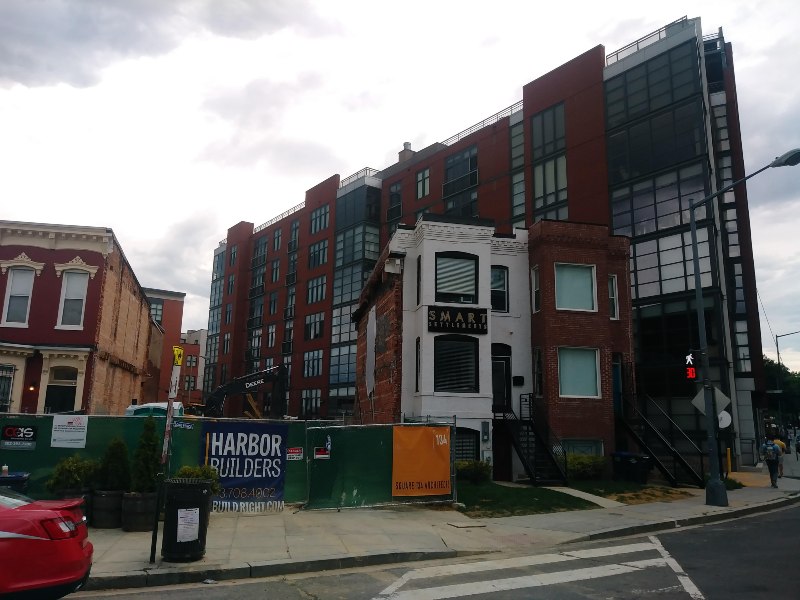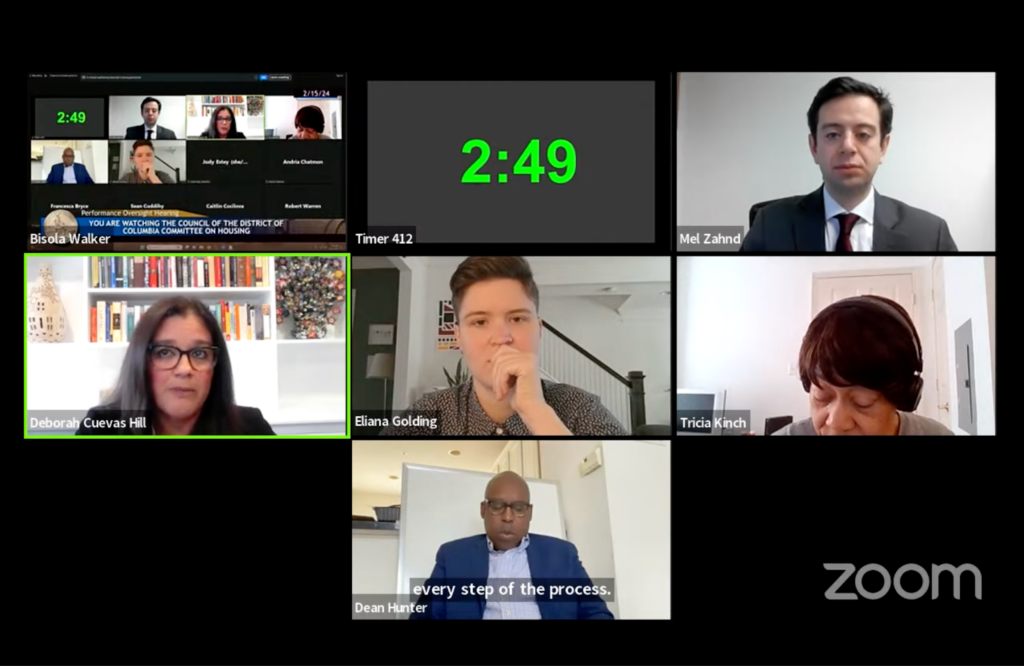It’s been more than a decade since D.C. lawmakers sought to add the District Opportunity to Purchase Act as a new tool to preserve affordable housing in the city. But the resulting program has languished ever since, prompting the D.C. Council to approve legislative fixes on Tuesday to facilitate a role for the D.C. government in purchasing rental buildings and protecting tenants who might otherwise be displaced.
The District Opportunity to Purchase Act, enacted in 2008 and commonly known as DOPA, allows for D.C. to purchase apartment buildings as a means of maintaining the city’s dwindling affordable housing stock. As initially written, it empowers the District to acquire “at risk” buildings in which at least a quarter of the apartments are deemed affordable for people making less than 50% of the area median income. The city can then sell those buildings to pre-qualified developers, who must maintain the units as affordable for as long as it remains a residential building.

However, the city did not establish the regulations needed to implement the program until nearly a full decade later, in 2018, and still has yet to acquire any properties under the program. On June 1, the D.C. Council gave initial support to five major changes to DOPA put forward by At-Large Councilmembers Anita Bonds, Elissa Silverman and Robert White; the bill with these legislative fixes won final approval this week.
“It is essential that we utilize every tool at our disposal to support additional affordable housing, and this is an important step forward,” Bonds said in a statement to Street Sense Media and The DC Line.
In April, a group of housing advocates and city representatives met with Bonds and Silverman to discuss the proposed changes aimed at preserving affordable housing in the District. Bonds, who chairs the D.C. Council’s Committee on Housing and Executive Administration, said at the meeting that she hoped new legislation could make the program more enticing to developers.
The new plan for DOPA was developed by a working group of government officials, tenant advocates and affordable housing providers who revised an earlier version proposed in 2019 by the Bowser administration.

First, it raises the income threshold that defines “affordable” — thereby enabling purchases under DOPA — from 50% of the median family income (MFI) to 60%. Enacting this change, Bonds said, will “make this program more compatible with other programs available to housing developers, such as the low-income tax credits.”
There are three ways for developers to qualify for the low-income housing tax credit, according to the Tax Policy Center. Only the first overlapped with the initial DOPA requirements: A developer qualifies for the low-income tax credit if at least 20% of the project’s units are for tenants with an income of 50% or less of the MFI. The other two ways to qualify are centered around tenants at or below 60% of MFI. Developers qualify for the tax credit if 40% of the project’s units will be for tenants earning 60% or less of the MFI, or if the average income of all tenants is not more than 60% MFI and no tenants earn more than 80% MFI.
This update means the vast majority of DOPA projects are likely to qualify for the tax credit. Second, the proposed law allows for added flexibility for increasing rents, which Bonds and others hope will make buildings acquired under DOPA more enticing to private-sector partners.
According to Beth Mellen, a supervising attorney at the Legal Aid Society of the District of Columbia, this is an important move that could address some of the not-so-evident problems presented by DOPA thus far.
“DOPA has a protection that on the surface seems wonderful for tenants. Existing tenants will pay their current rent or 30% of their income, whichever is less. But the problem is this has proved to be a bit of a poison pill for the program,” Mellen said at the April meeting. She believes the reason this provision is so disastrous for the program is it makes it almost impossible to maintain affordability without obtaining ongoing government subsidies.
While those two changes are focused on making DOPA more financially attractive for developers in order to get the program moving, the legislation also includes provisions to strengthen protections for tenants.
A third key provision in the bill means developers who acquire housing units under DOPA could not raise rents on existing tenants for the first year. And any subsequent rent increases would be fixed to levels allowed under the District’s rent control law or to an affordability program that is already in place.
Fourth, the legislation expands DOPA eligibility to all residential buildings regardless of how many of the existing units are deemed “affordable” — a significant expansion of the existing authority.
“The current formula is relatively strict in a market where rents have been rising, and so many buildings are just excluded, kind of out of the box,” Mellen said.
Lastly, the new legislation amends an enforceable covenant that had required the affordable units in a property acquired through DOPA remain affordable for as long as the building remains a housing facility owned by the District. Under the new legislation, this guarantee persists even if the government sells the property to a new owner.

Hank Brothers, an attorney who represents developers and specializes in affordable housing, said that while he sees the changes as making DOPA more effective and appealing to developers, the legislation doesn’t resolve all of the reasons some may be wary of participating.
“There is a fair amount of risk in taking [on] a DOPA property,” Brothers said. “There’s general real estate development risk; there is also the risk of the dealings with the resident population.”
Brothers, who is experienced in cases involving the District’s long-standing Tenant Opportunity to Purchase Act (TOPA), said that tenant organizations generally distrust developers — of any type — regardless of whether they come to the property “under DOPA, TOPA or otherwise.” This distrust, Brothers said, can result in costly delays.
In spite of the challenges, Brothers said, he’s optimistic about the new changes to the program which he helped advocate for, and believes they will “resolve uncertainties” developers have about whether they can participate profitably.
Polly Donaldson, the director of the D.C. Department of Housing and Community Development (DHCD), described DOPA’s broad priorities as boosting the availability of affordable housing, increasing the number of homes where affordability is protected by enforceable covenants, and creating “mixed-income” communities.
In an interview with Street Sense Media and The DC Line, Donaldson said that she believed the changes brought on by the new legislation will address “all of the concerns that we had that we thought prevented the program from being implemented.”
Although DOPA has not resulted in any building purchases, the program hasn’t been dormant, according to D.C. officials.
Since the regulations were finalized in November 2018, Donaldson said, DHCD has received 87 DOPA notices identifying buildings the District could purchase. The agency has pursued 15 of those opportunities by publishing requests for proposals for the program’s pre-qualified developers to consider.
DOPA is aligned closely with the Tenant Opportunity to Purchase Act, which gives the residents of a rental building the first opportunity to buy the property if it is being put up for sale. The District’s chance to buy a building is triggered only after tenants pass on their opportunity under TOPA, but supersedes any offers on the private market.

The city did not purchase four of the 15 properties because tenants exercised their TOPA right to purchase. According to Donaldson, developers did not show interest in the 11 properties that remained eligible for purchase under DOPA.
In her comments at the April meeting, Silverman affirmed the need to fix DOPA to aggressively preserve affordable housing and emphasized just how much was being lost while they discussed how to repair it.
“We are in an affordability crisis in the District,” Silverman said. “We have a severe shortage of low rents west of Rock Creek Park even at this time. And we’re slowly losing affordable housing as buildings are bought and sold.”
Silverman also described DOPA as part of the “racial equity equation” in the District.
“It’s about making sure those, especially Black and Latino, residents who have been living in neighborhoods can stay in those neighborhoods,” Silverman said.
A report prepared by the new Council Office on Racial Equity in May says that implementing DOPA can help correct years of racist government policies that have led to today’s wide disparities in housing, which have disproportionately affected Black families.
According to the report, Black and Latinx families face the highest rates of “rent burden” in the District — paying more than 30% of their incomes — and the lowest rates of homeownership.
Without the changes that will now be sent to the mayor and Congress for approval, all those at the April meeting concurred the program would remain as it has been for nearly 13 years: empty words on paper.
This article was co-published with The DC Line.
Will Schick covers DC government and public affairs through a partnership between Street Sense Media and The DC Line. Year one of this joint position was made possible by the Poynter-Koch Media and Journalism Fellowship, The Nash Foundation, and individual contributors.








